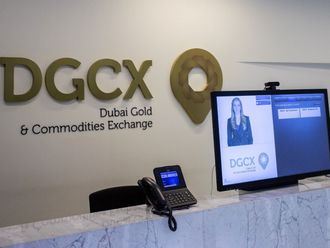As digitisation rapidly reshapes industries, an increasing number of corporations are using corporate venture capital (CVC) and other tools such as innovation labs, incubators and accelerators to gain access to new technologies and fast-track innovation by allocating big budgets to support start-ups.
CVC is not the only tool that companies can use to complement internal research and development (R&D). Rather, it is one of several: companies choose which tools to use in line with their business diversification, innovation strategies or specific innovation goals. Venture investment is an additional method for companies to assimilate new business models or innovation into their existing business model.
For larger corporations, CVC is a means to outsource some of their R&D efforts in new and unproven technologies to enhance business capabilities, without assuming all of the associated costs and risks. With the surge of corporate venture capital and increasing pressure to jump on-board with start-ups, numerous companies are making headway into venture investments.
Saudi Aramco Energy Ventures (SAEV) is looking to invest in start-ups focused on technologies related to oilfield, hydrocarbon processing and utilities optimisation. It has invested in Gryphon Oilfield Solutions, a Texas-based energy and oilfield equipment and service provider that develops solution-based technology to address challenges facing operators in conventional and unconventional oil and gas plays around the world. SAEV has also provided Series C funding to Zahroof Valves Inc, a Texas company that has developed and markets the Straightflo Valve for use in reciprocating gas compressors.
The motivation behind the actions of CVCs may vary, but it is often concentrated on innovation return on investment (ROI). It is imperative for start-ups to recognise the perspectives of CVC, one of them being the fact that funding an innovative start-up and acquiring it (or its technology) later is more economical than building the equivalent talent in-house. In addition, it allows to invest in an adjacent or new business model and preserve the entrepreneurial spirit and agile operating model to merge it later on with the parent organisation or make the new entity the centre of competence and leader for this business.
The relationship between start-ups and CVCs is valuable, with benefits comprising incubation, acceleration, hackathons, platforms, spin-offs, and halo customers. Three imperatives that start-ups should consider to capture the attention of CVC investors:
Startups can transport a product or technology that has been tested in other markets, generating a significant opportunity to the local environment. This can result in investors placing strategic bets in the technology sector.
A case in point, the region was ready to benefit from the convenience of on-demand or scheduled ride-hailing and Careem addressed demand across a variety of untapped customer segments, and to date, Careem has a current valuation of $1.2 billion.
Startups can also work on addressing a specific issue faced by consumers or companies in the region by developing unique sets of technologies and business solutions. For that, this can raise the appetite of players in adjacent sectors to vertically integrate the new technology and solutions within their business.
For instance, Paytabs developed a one-stop payment system to manage businesses online; the Bahrain-based start-up raised $20 million funding from multiple investors in 2017.
* Leverage technology to enhance a specific sector that hasn’t yet been affected by the digital revolution that most sectors are undergoing. This is likely to result in incumbent players acquiring start-ups to gain a technological and digital edge on competitors.
This is evident with Bayzat, a provider of insurance and HR solutions in the region who successfully captured a portion of a $30 billion premium regional market.
The progress of CVC investments, seeking to invest in high-growth businesses, has seen an upsurge worldwide — the percentage of CVC investment grew from 20 per cent in 2016 to 26 per cent in 2017. The similar mandate is reflected regionally, whereby the relevance of corporate investors in venture capital (VC) deals has steadily risen over the last few years — approximately 84 per cent of total VC deals in the Middle East involved participation by corporate investors in 2017, corresponding to about $550 million across 13 deals, up from about 50 per cent in 2015 or $60 million across six deals.
It is critically important for corporations to avoid hindering a start-up’s agility or crushing its creative spirit. Similarly of equal weight, start-ups in the Middle East today should investigate and delve deep into world of corporations as CVC units are on the constant lookout to glean into the start-up industry segment, the players, its business model, and the technologies it uses or develops, not only for the purpose of acquisition but also to assess and analyse risk investments.
(Markus Massi is senior partner and managing director at The Boston Consulting Group M. E.)












